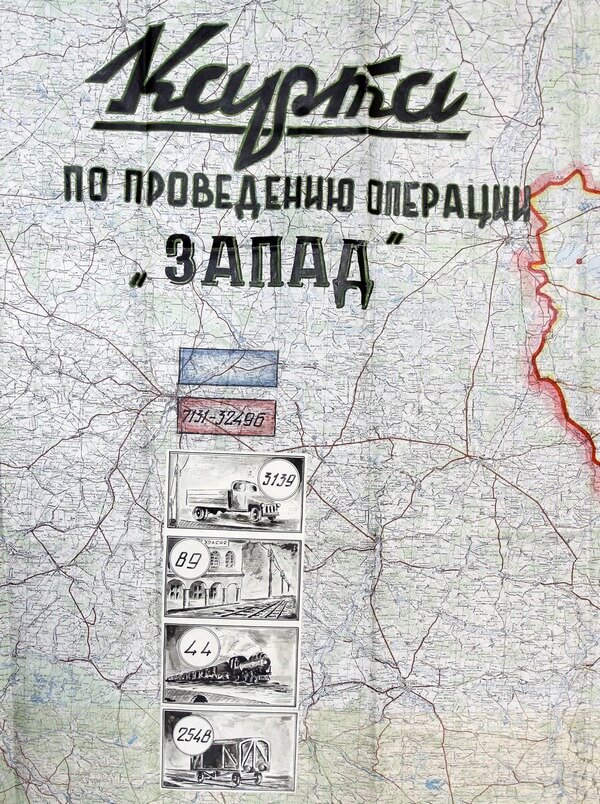
The fear to speak openly in public is almost gone in Ukraine today. However, we often meet and interview older citizens when we do local research to find a lost family in the villages. This is when we can still sometimes witness the fear, see the “ghost” of our Soviet heritage. It makes me recall how careful my grandparents were in their “kitchen talks”, my grandfather’s stories about being “on the list” and being watched for some minor, stupid reasons even when he was a university student.
This is why, on our research trips, we always bring with us a letter of introduction, some old family pictures or a photo of the customer who has ordered the family research. It is a good way to stir up interest, start conversations, and to try to make people feel safe when we interview them, to prove the purpose of our visit, and explain that we won’t do any harm.
I also often hear that even upon emigration people were often very careful and would not tell any stories about their lives in the old country. There can be many reasons for this, fear being one of them. Today I would like to illustrate this.
This post is about “Operation West”, one of the fastest and the most massive deportations of the Ukrainian population: about 26,000 families or about 75,000 people in 6 days. They were the families of the underground resistance members and their close relatives. Mostly they were older men, women, and children. 23,240 of the deportees were children under 15.
Which area was affected?
The deportation took place in the provinces of Volyn, Rivne, Stanislaviv (current Ivano-Frankivsk province), Ternopil, Lviv, and Drohobych (current Lviv province).
In Lviv, it was started at 2 am, in October 1947. The arrests in Rava Ruska, Zhovkva, Busk, Horodok, Javoriv, took place from 2 am till 4 am the same day. The arrests in other towns and villages were started at dawn.
The last train with deportees, #02040, started from Zabolotiv station in the present Ivano-Frankivsk province at 4:05 pm, only 5 days later. It consisted of 64 carriages and was more than half a kilometer long.
Why?
It was the way to get rid of any resistance and to destroy its social support, as a lot of the population was hostile to the authorities. Also, there were local elections planned for Dec 31, 1947, and elections to the Supreme Council planned for 1948. It was one of the ways to fix the desired results, as historian Oleh Bazhan has stated.
Could anybody uprise to resist deportation?
About 30 000 soldiers and 16 000 overhead personnel were enrolled. The military units surrounded villages and used the lists that were made in advance to arrest the citizens, put them on trucks, and send them to the railway stations. In some locations, the families that were ill with some infectious diseases were substituted with families from the “reserve lists”, to make sure that the plan was fulfilled or even exceeded.
The documents that were revealed by SBU (Security Service of Ukraine) tell the following story.
“When the truck with the families of “criminals” was leaving the village of Korpyn, Rivne district, the residents of this village surrounded it in a tight ring to stop it. As a result, the task group was forced to open fire with a warning to restore order and allow the truck with the “criminals’” families to leave. Similar fates awaited the families detained in railway cars in the villages of Novy Dvir and Abarov of Rivne district “.
“In some villages of Rivne, Oleksandriya, Tuchyn, Mezhyritsk, and other districts, women accompanied the deportees with crying and shouting. There were cases when some of them angrily demanded to know why this was happening, and they were then loaded together with the deportees or shot on the spot.”
What happened to their property?
It was registered and passed on to hospitals, kindergartens, schools, collective farms, cooperatives, and local activists who supported the Soviet occupation.
Where were people taken?
The majority of the deportees, about 21,000 families were sent to work in mines in eastern areas of the Soviet Union: Kazakhstan, Krasnoyarsk District, Irkutsk, Molotov, Cheliabinsk, and Chita provinces. About 5000 families of the “active members of resistance” were sent to Omsk province to work in the agriculture and manufacturing industry. Hundreds of older people and children died on their way. 875 deportees tried to escape from the trains, 515 were captured by the escort teams.
What was the result?
The deaths and broken lives of many people were the most tragic results. It also weakened nationalistic resistance. It was also hoped that Western Ukraine would be turned into a “melting pot” by compensating for the lack of labor force with specialists from other areas. It boosted collectivization. The scared population started joining collective farms more eagerly, hoping to escape further deportations, which did not stop. Yes, there were more people exiled: 22,308 families or 80,209 people in the period 1948-1952.
This research of the facts and numbers gave me a better idea of my grandparents’ lives and feelings. E.g., I understand why there isn’t a single picture of my GG grandfather preserved. He was the head of the cavalry unit of Sich Riflemen in the Austro-Hungarian Army at WWI times.
I hope this post will give you a better idea of what things were like behind the iron curtain, why your ancestors may not have wanted to talk about their native country, and why family connections were broken. You can read a bit more about this topic in my article about mail censorship.
I encourage you to follow or befriend Andriy Dorosh on FB not to miss any of my further blog posts. We will be happy to help you discover your family stories too.
Sources:
www.istpravda.com.ua/short/2017/10/20/151361/
www.radiosvoboda.org/a/explainer-operation-zapad/28806533.html
www.bbc.com/ukrainian/blogs-41697023